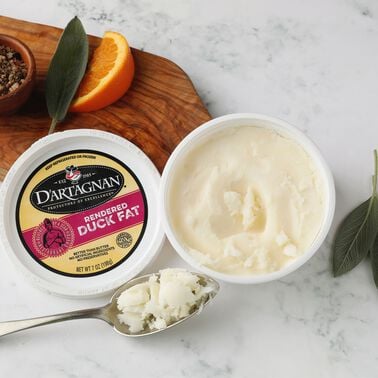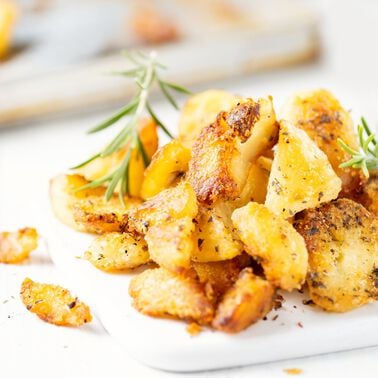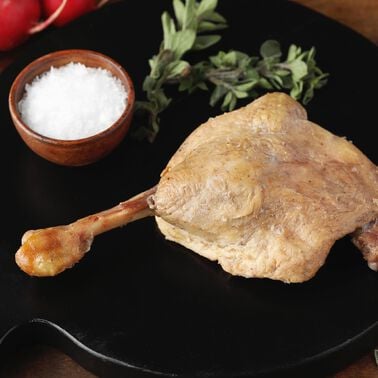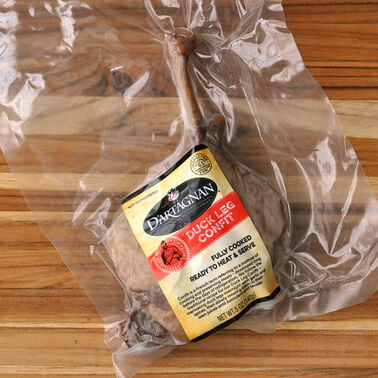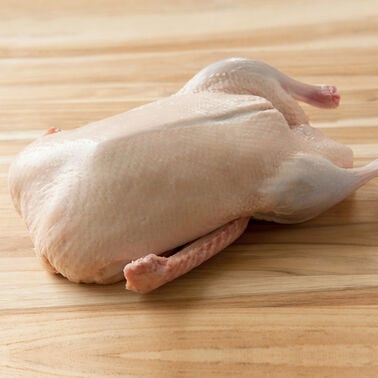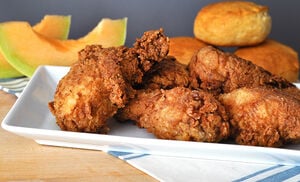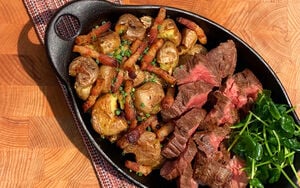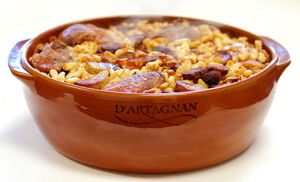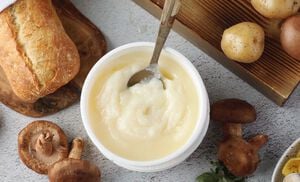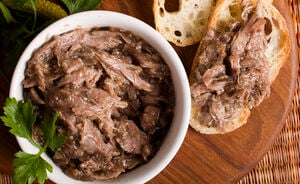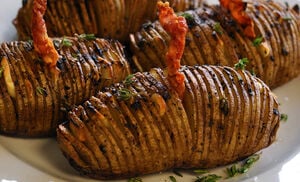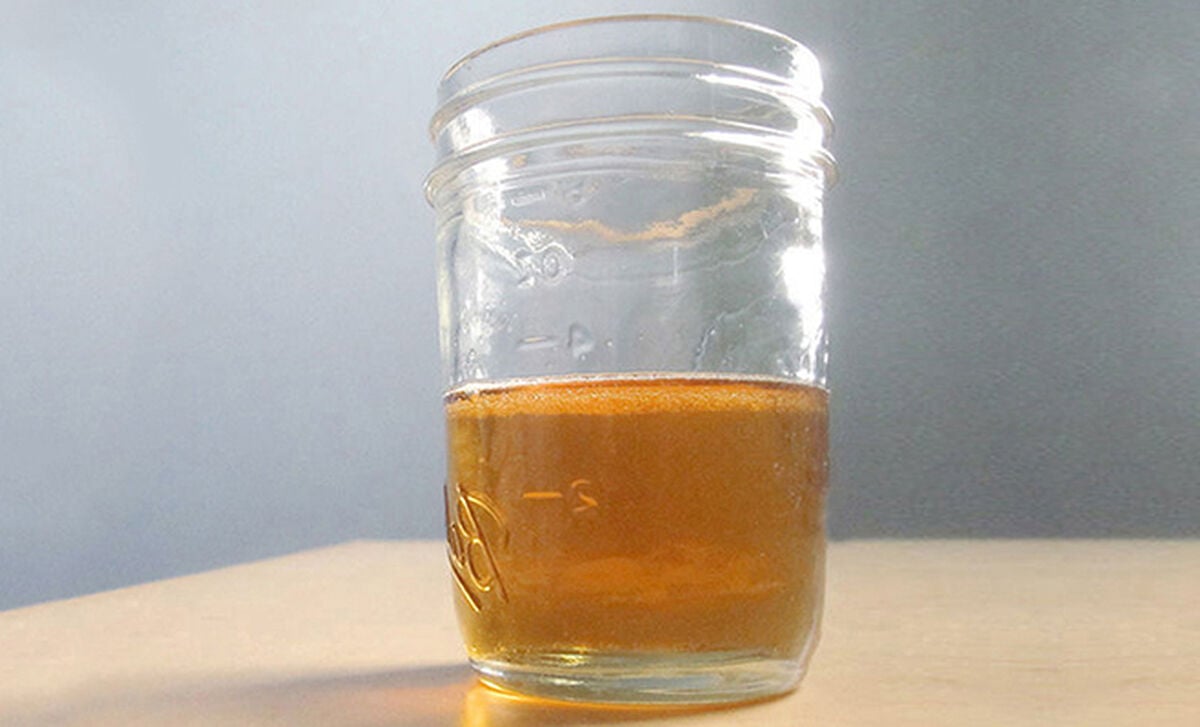
Besides the requisite batch of “liquid gold,” rendering duck fat at home will yield a tasty bonus: fritons. Fritons, also called grattons, are basically duck cracklings. The freshly crisped morsels are a highly addictive snack, lightly salted, eaten out of a bowl and lovingly referred to as “Gascon popcorn.”
Fritons are also often made into a terrine or a potted spread, much like rillettes. For this simple preparation, a small amount of seasoning is added, such as garlic, and sometimes piment d’espelette, along with some rendered fat, then the mixture is ground before preserving. These fritons are eaten at room temperature with baguette or toast points.
Either preparation can be enjoyed anytime of day but fritons are traditionally eaten as a snack during l’heure de l’apéro, whiling away the time before dinner with an aperitif, some little bites and good conversation.
Now, back to the fat!
Rendering Duck (or Goose) Fat Step-by-Step
1. Carefully remove all of the skin and fat from the duck, cutting close to, but avoiding the meat. Once removed, cut into chunks, approximately 1”x1”.
2. Place the cut skin into a heavy-bottomed stockpot or large Dutch oven. Pour about ¾ cup of water over the skin. Simmer over medium-low heat, turning the bits of skin occasionally, until the water has evaporated and the skin has fully crisped and released its fat. This process should take about an hour. Note: As the fat renders and the water evaporates, the mixture may hiss or spatter. This is normal.
3. With a slotted spoon remove the cracklings and drain in a bowl lined with paper toweling. Sprinkle with sea salt while warm. Duck cracklings can be kept in an airtight container at room temperature for up to 3 days, although they are best served fresh.
4. Allow the liquid fat to cool slightly, then strain into clean, sealable containers using a fine mesh sieve lined with cheesecloth. Store the duck fat covered in the refrigerator for up to 6 months or in the freezer for a year.
